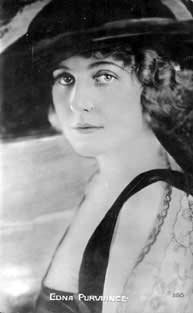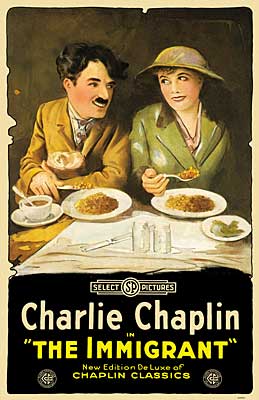 |
|||||||||
|---|---|---|---|---|---|---|---|---|---|
|
|
Gender in Chaplin Comedies
Photo Courtesy of: Similarities within the Chaplin Comedies
In The Immigrant, we saw these characteristics in the lead female when her mother’s money was stolen. The girl becomes weak by sitting down and crying instead of looking for the money. She is distraught and upset until Chaplin swoops in and saves the day by giving her his money. It is here that she has become dependent on Chaplin because now he is her hero. She is also portrayed as weak and gullible when Chaplin is trying to convincer her to marry him at the end. While she puts up a little bit of fuss, she never really takes a stand as to if she wants to marry him or not. She flirts with him and then says no but it’s not a serious no. She is indecisive and unclear so Chaplin picks her up and carries her in. In The Count, we see another woman who is not able to communicate what she wants. Miss Moneybags seems almost like a pawn between two players than a real person. It seems that she only does what she is told and we never learn what it is that she really wants. Does she like Chaplin, Chaplin’s former boss, or the real Count? During the scenes when the men are fighting over her, you never see her cheering one man on over the others. She seems happy with any one of them as long as she is taken care of. Finally, there was Easy Street , were we see the villains wife as the typical weak and dependent woman. The best example of this comes when she steals food from across the street and Chaplin catches her. She looks so beat up that Chaplin takes pity on her and steals even more food for her. It is here that her dependence on others is apparent because she isn’t able to take of herself very well.
The Immigrant shows Chaplin as the usual small broke man. His generosity shows up when he gives his money to the woman who has lost hers. The conflict arises when he is in the restaurant and has to pay but realizes he has no money. After a series of comedic actions, he finally uses his intelligence and uses the artist’s tip money to pay for his meal. In The Count, Chaplin is again portrayed as a poor man. He goes around to rich men’s homes and is fed by the maid. While he is in one such home, he finds himself portraying a Count to a beautiful woman. When the real Count shows up, Chaplin uses comic relief and cunning to safely make it out of the house and avoid punishment. Easy Street starts off portraying the male lead in a different way. Chaplin is a bum who goes to a mission and comes out a better man. He is hired to protect Easy Street and soon becomes the hero when he uses his comedy and wit once again to defeat the villain. Alas, the villain escapes from the police soon after being taken in. After more scenes of comedic actions, Chaplin finally drops a stove on the villains’ head and Easy Street is finally safe for good. The comedy ends with everyone respecting Chaplin, even the villain who has changed his ways, and of course, Chaplin gets the girl. Just like a real hero.
|
||||||||
For questions or comments, please contact John Gruber-Miller |
|||||||||




